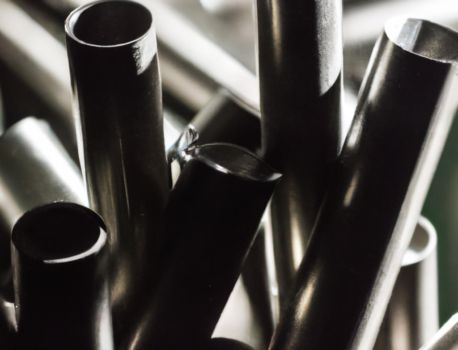Shine of Precision: Exploring the Properties of Silver Steel
Silver steel, an alloy often revered for its remarkable properties, has captured the attention of engineers, artisans, and designers alike. This alloy, composed primarily of carbon and chromium, exhibits exceptional hardness, wear resistance, and machinability. In this article, we delve into the depths of silver steel, uncovering its unique attributes, applications, and potential for future innovations.
Composition and Characteristics of Silver Steel
At the heart of silver steel’s allure lies its intricate composition. Combining carbon, chromium, and small traces of other elements, this alloy strikes a balance between hardness and malleability. The carbon content contributes to its impressive hardness, making it a preferred choice for precision engineering. Moreover, the addition of chromium enhances its wear resistance, ensuring longevity in demanding applications.
Heat Treatment Process
To unlock its full potential, silver steel undergoes a meticulous heat treatment process. Annealing, a crucial step, softens the alloy for shaping and machining. The subsequent hardening process endows it with unparalleled strength, catering to the demands of tools and components subjected to stress. Tempering, the final step, refines the alloy’s hardness and toughness, establishing a harmonious equilibrium.
Applications in Industrial Settings
Silver steel emerges as a cornerstone of various industrial sectors. In toolmaking, it shapes cutting tools and implements, maintaining sharpness during prolonged usage. Precision engineering benefits from its dimensional stability, as it crafts intricate shafts and components. The alloy’s exceptional strength-to-size ratio ensures optimal performance in delicate mechanisms.
Comparative Analysis with Other Steels
In the realm of steels, silver steel stands as a distinct entity. Contrasting with high-speed steel, it prioritizes wear resistance over sheer hardness. Compared to carbon steel, it triumphs with its corrosion resistance and durability. These contrasting attributes empower silver steel to thrive in specialized applications, setting it apart from the conventional.
Machinability and Formability
The machinability of silver steel, a pivotal aspect, expedites manufacturing processes. Its uniform structure allows for precise shaping and intricate detailing, enabling the creation of complex components with ease. As it yields to lathe and milling operations, artisans harness its formability to sculpt intricate designs that harmonize aesthetics with functionality.
Corrosion Resistance and Durability
A remarkable trait of silver steel is its resilience against corrosion. This property, bolstered by chromium’s presence, extends the alloy’s lifespan even in corrosive environments. Components crafted from silver steel remain steadfast, making it a reliable choice in applications where exposure to moisture and chemicals is inevitable.
Jewelry and Decorative Applications
Beyond industry, silver steel finds its way into the realm of artistry. Jewelry makers appreciate its malleability, crafting ornate designs that endure over time. The alloy’s lustrous surface invites creative exploration, enhancing the visual appeal of adornments. In this crossover between engineering and art, silver steel showcases its versatility.
Welding and Joining Possibilities
Welding silver steel demands finesse to preserve its integrity. Careful selection of welding methods, along with preheating and post-weld heat treatment, ensures that its properties remain unaltered. By navigating these considerations, manufacturers can harness the alloy’s strength while achieving seamless joins in intricate assemblies.
Innovations and Future Prospects
As technology advances, the future of silver steel looks promising. Ongoing research aims to fine-tune its properties and expand its applications. Innovations may unlock novel uses, further solidifying silver steel’s significance in industries ranging from aerospace to healthcare, as it continues to redefine precision and reliability.
Maintenance and Care
To prolong the life of silver steel components, prudent maintenance is essential. Regular cleaning, proper lubrication, and safeguarding against harsh conditions preserve the alloy’s exceptional attributes. Adhering to recommended practices ensures that the luster of silver steel endures, maintaining its performance for years to come.
Environmental Impact
Silver steel’s positive environmental impact stems from its recyclability. Its composition facilitates recycling without compromising its properties. As sustainable practices gain momentum, the alloy aligns with eco-friendly initiatives, emphasizing its role beyond its mechanical prowess.
Conclusion
In the intricate world of materials, silver steel radiates as a remarkable contender. Its composition, heat-treated to perfection, yields an alloy of exceptional hardness, wear resistance, and machinability. From industrial tools to artisanal jewelry, its applications span diverse domains, attesting to its versatility. As we gaze into the horizon of innovation, silver steel’s shimmering potential continues to captivate, offering a luminous future in the realm of precision engineering.
…

